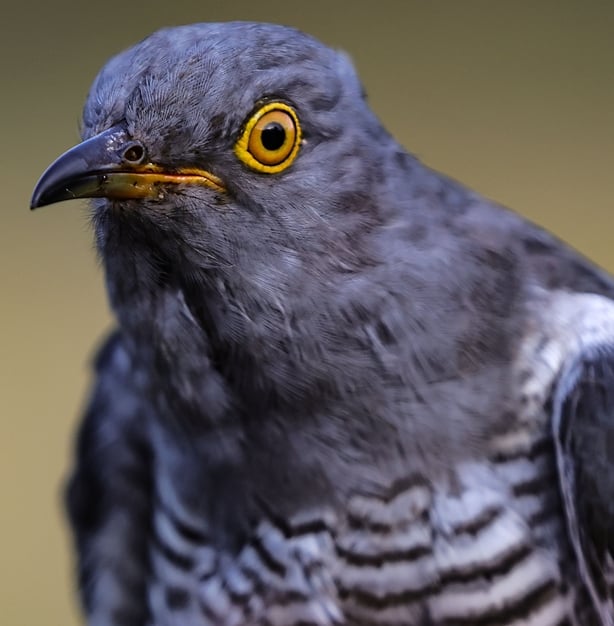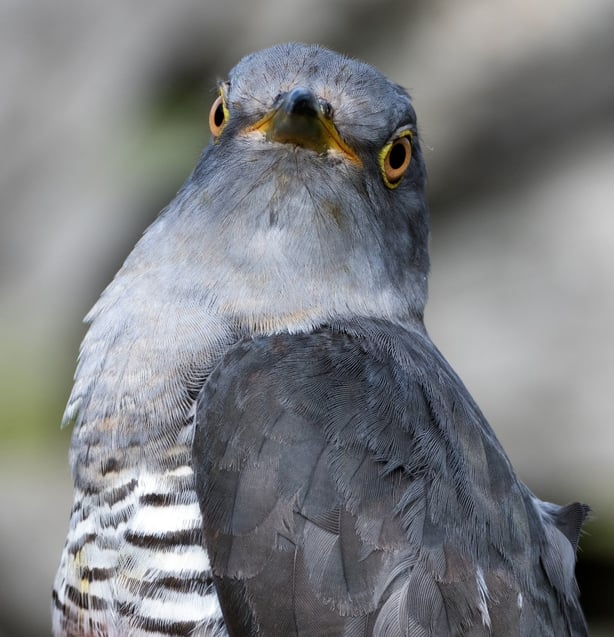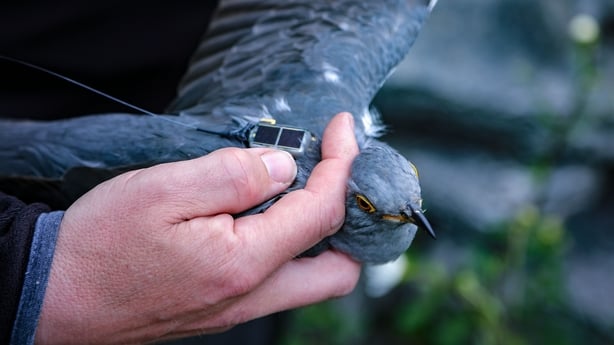A cross-channel tracking project has begun to help understand the mysterious journey of the Irish cuckoo - as well as the bird's apparent decline and shift towards the west of Ireland.
The British Trust for Ornithology ( BTO) in collaboration with the National Parks and Wildlife Service (NPWS) has this year included four Irish cuckoos in its long-running satellite tracking project.
Over the past decade, the BTO has followed 100 British cuckoos.
Three of the four Irish cuckoos fitted with tags on 17 May are from Killarney National Park in Co Kerry.
The fourth was caught in the Burren, Co Clare.
Fine mist nets were used to capture the cuckoos before the sun came up.

The project aims to find out where Irish cuckoos spend their winter months and whether they undertake a different migration strategy to their British counterparts.
English cuckoos migrate via Spain while Scottish cuckoos migrate via Italy, the BTO cuckoo project has already established.
Minister of State for Heritage Malcolm Noonan said the project ushers in "a new era for bird monitoring" in Ireland.
"Cuckoos are fascinating creatures and the Irish population’s migration patterns are something of a mystery, so it will be very exciting to see the results of this innovative project over time," he said.
Chris Hewson, lead scientist with the BTO cuckoo project, said the Irish cuckoo is "at the western extremity of the species breeding range" and this makes understanding its migration especially exciting.

In Ireland, the cuckoo has displayed a population shift northwards and westwards, similar to a number of other migrants that winter in Africa’s humid regions, according to the NPWS.
There has also been an overall decline in cuckoo numbers in Ireland with breeding numbers down 27% between 1968 and 2011 when the last breeding census was completed.
However, there is little known about the potential causes and drivers of these declines.
Arriving in late April, and laying their eggs in the nests of small birds, not much is known about the routes the cuckoos take once they head off on migration in July or where in central Africa they spend the winter months.
The BTO believes at least some of the cuckoos' decline in the UK may be linked to their migration routes - with higher mortalities for those migrating via Spain than Italy.
"If these areas of importance could be identified, then scientists would be able to better understand habitat pressures that affect losses of the Cuckoo population," the NPWS said.

The four Irish cuckoos - Torc, Cores, KP and Carran - are all male singing cuckoos.
They can be followed on the BTO website and on the website of Killarney National Park.
Torc left Torc mountain in Killarney National Park at the weekend and is now in Tipperary.
Cores also left Killarney and was just south of Ballincollig, Co Cork before moving north to Slievenamon Bog, Co Tipperary. At lunchtime on Tuesday he was in the Garryowen are of Limerick.
